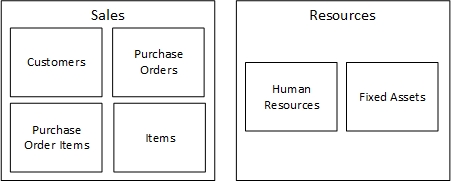This post is focused on providing a foundation for the structures and designs of a relational database.
Tables/entities
The typical structure of a table is a set of rows , each with its own data in a specified column. This table is a list of customers with their first names ,last names , addresses and a uniquely assigned customer number :

Entity Relationships
A very rudimentary data structure is one of a customer buying one or more items. The customer creates a list of things they wish to buy (a purchase order) which is unique to them. The purchase order is given a unique identifier and relates to a list of items which are added to that purchase order by the customer.

Schemas
Tables/Entities can be isolated from one another through the use of a schema. A simple form of this concept is that entities related to isolated business processes are separate from one another. Users and groups can be isolated to only be allowed to work with a specific schema, providing access to the entities within it or they can be allowed to access another schema.In some databases a schema can be represented differently. Oracle Databases consider it to be a logical data storage structure where each user is given their own schema with objects like tables , indexes and views being contained therein. With MySQL databases a schema and a database are synonymous but are not user specific, instead users are granted access to databases/schemas through permissions.

